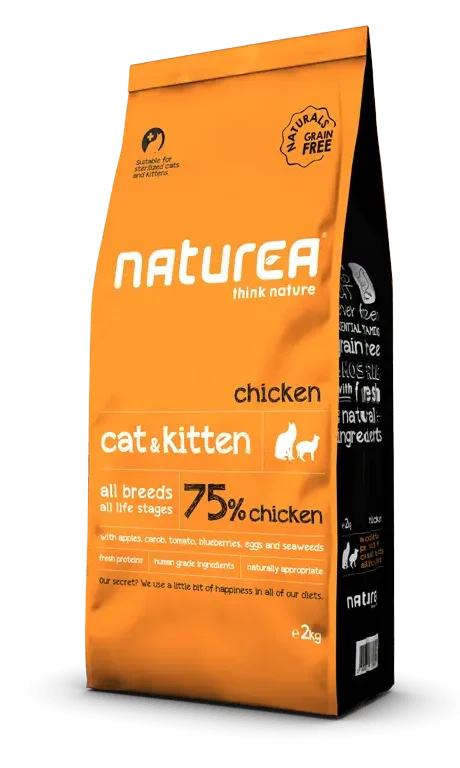Naturea
Cat & Kitten Chicken, All Life Stages
ALS
Regular
Indoor and Outdoor
Grain-Free
Click to reveal the score breakdown
Tap to view ingredients, guaranteed analysis and more
Ingredients
Fresh deboned chicken (never frozen)
40%
Dehydrated chicken
30%
Dehydrated potato
Chicken fat
Hydrolyzed chicken liver
5%
Brewer’s yeast
Carob
Apple
Calcium carbonate
Dried whole egg
and also:
Fish oil, Seaweeds, Cranberries, Blueberries, Tomato, Potassium chloride, Yucca schidigera
Vitamins and Additives
Vitamin A 18000 IU
Vitamin B1 7.2 IU
Vitamin B2 0.054 IU
Vitamin B6 7.2 IU
Vitamin B12 0.054 IU
Vitamin C 40 IU
Vitamin D3 1.5000 IU
Vitamin E 1000 IU
Notes
The score is calculated after relocation of fresh meat or fish ingredient(s) as explained in the calculation rule #7 in Chapter 1.
Guaranteed Analysis
Crude Protein
32%
Crude Fat
18%
Crude Fiber
2%
Moisture
8%
Crude Ash
7.5%
Calcium
1%
Phosphorus
0.9%
Potassium
0.6%
Magnesium
0.08%
Omega 3
0.3%
Omega 6
2.9%
Metabolizable Energy
4200 kcal/kg
Notes
The score is calculated after relocation of fresh meat or fish ingredient(s) as explained in the calculation rule #7 in Chapter 1.
Product last updated: July 28, 2024, 10:26 AM
Please hold on while we’re getting the best offers for you
7212

